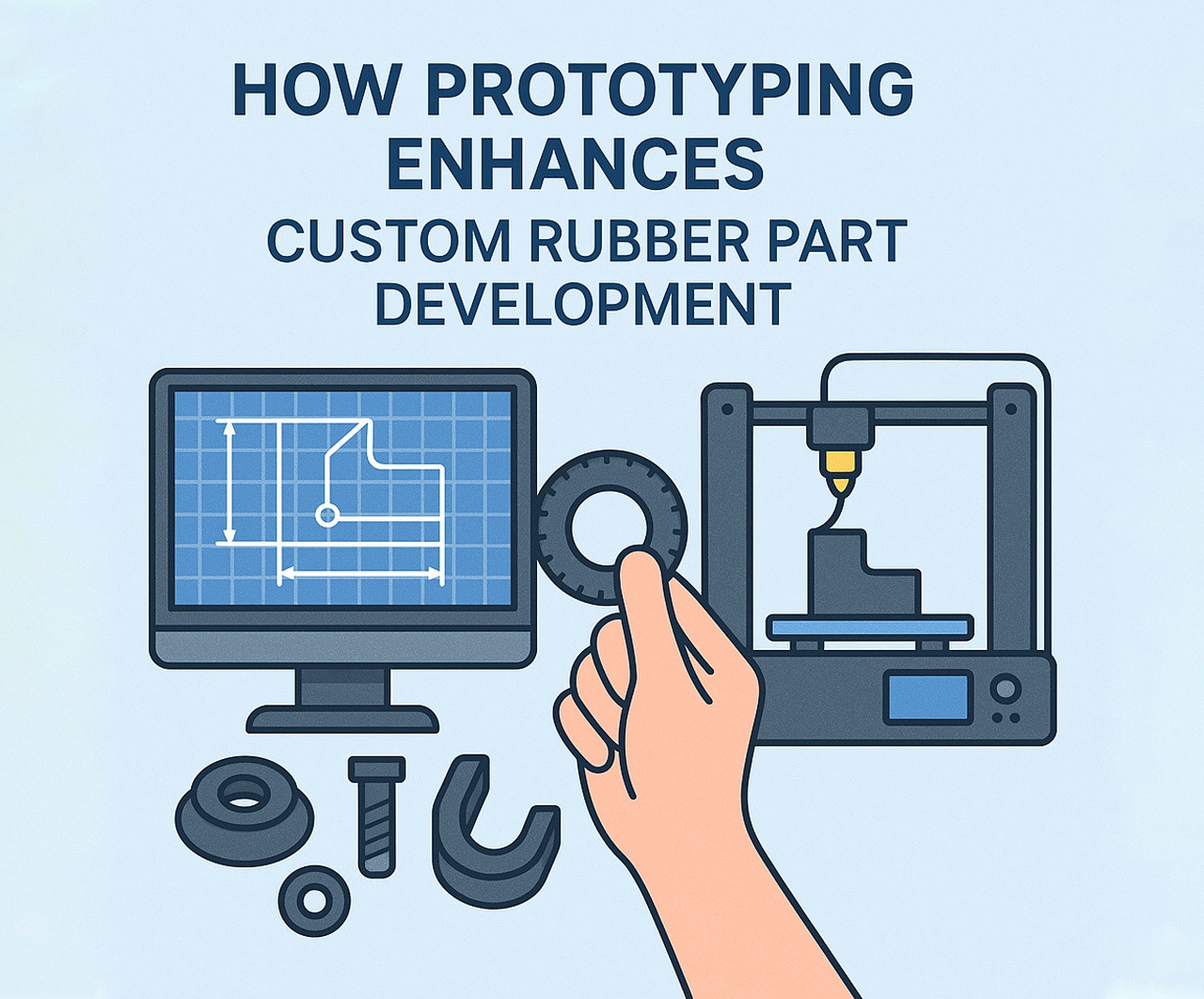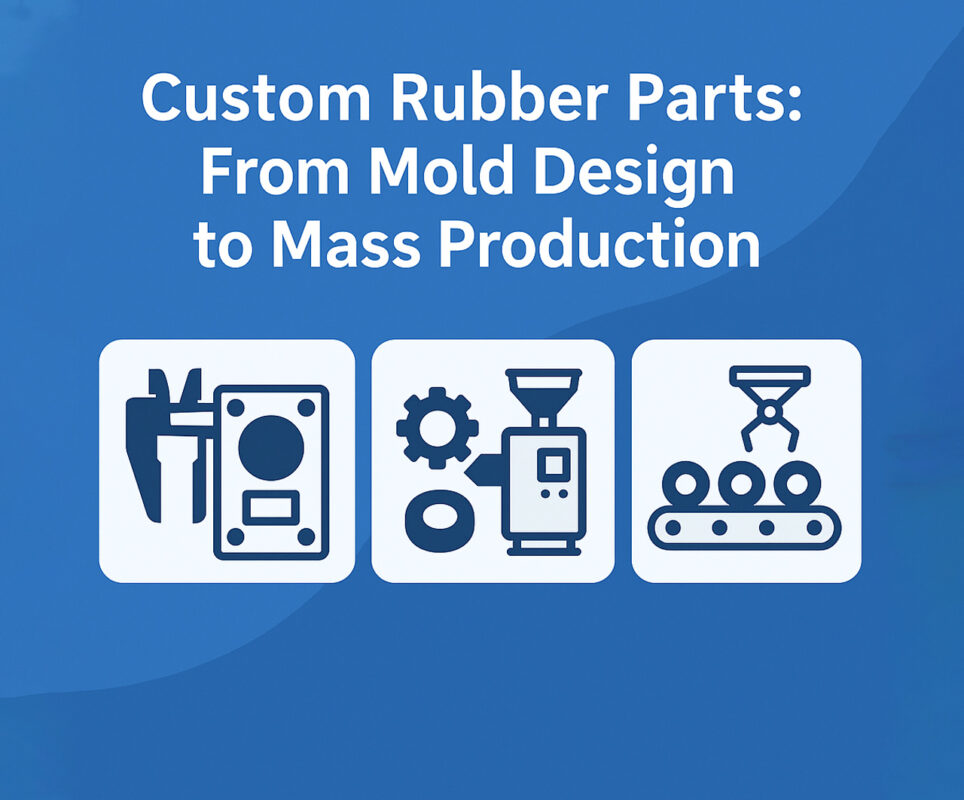In today’s fast-paced manufacturing world, speed, precision, and customization aren’t luxuries—they’re necessities. Nowhere is this more evident than in the development of custom rubber components like the rubber gasket, rubber trim, and rubber weather stripping. These seemingly simple parts are often critical to the performance of everything from medical devices to automobiles and industrial machines. And the key to perfecting these parts? Prototyping.
Prototyping transforms a concept into a tangible, testable reality. It accelerates development, uncovers design flaws early, and ensures that each rubber gasket, rubber trim, or rubber weather stripping element functions exactly as needed. In this article, we explore how prototyping is revolutionizing custom rubber part development, offering efficiency, creativity, and long-term cost savings. Know more..
Why Prototyping Matters in Rubber Component Design
A rubber gasket might appear simple, but its role in sealing systems can make or break a machine. Similarly, rubber trim provides more than just a neat finish—it often serves protective or insulating purposes. And rubber weather stripping is essential in environmental sealing for doors, windows, and hatches. These components require tight tolerances, specific durometers, and precise dimensions—all of which are validated through prototyping.
Core Benefits of Prototyping in Rubber Development:
- Accelerates time to market
- Improves product quality
- Reduces material waste
- Ensures fit, function, and manufacturability
- Encourages design iteration and innovation
From Idea to Sample: The Prototyping Process
Custom rubber part prototyping begins with a clear understanding of the product’s function. Whether it’s a compression-sealed rubber gasket, a decorative yet protective rubber trim, or air-tight rubber weather stripping, the first step is capturing the design intent.
Steps in the Prototyping Workflow:
- Design Phase
- CAD modeling of the part
- Material selection (EPDM, silicone, nitrile, etc.)
- Functional and environmental requirement analysis
- Prototype Fabrication
- Rapid tooling (e.g., soft tooling or 3D printed molds)
- CNC-cut prototypes for precise geometry
- Hand-assembled mockups for quick feedback
- Testing and Validation
- Fit and compression testing (critical for a rubber gasket)
- Edge adhesion and aesthetics for rubber trim
- Flexibility, UV, and moisture resistance for rubber weather stripping
- Iteration and Optimization
- Adjustments to wall thickness, ribbing, or durometer
- Re-prototyping with modified designs
- Finalization for mass production
Prototyping Technologies in Use Today
1. 3D Printing
Although less common with elastomers, 3D printing is gaining traction for conceptual and fit models of rubber gasket or rubber trim designs. New flexible filaments now allow engineers to simulate durometer and deformation.
2. CNC Machining
For fast, accurate prototypes, CNC-machined molds or directly milled rubber sheets are ideal. This is often used for rubber weather stripping where precision fit is non-negotiable.
3. Water Jet and Laser Cutting
Perfect for creating flat parts like rubber gaskets, these methods ensure clean edges and fast turnaround without the need for tooling.
4. Compression Molding with Soft Tools
Soft aluminum or urethane molds are created quickly to produce low-run parts from production-grade rubber. This method is perfect for functional testing and validation of rubber trim and rubber weather stripping elements under real-world conditions.
Why Custom Rubber Needs Custom Prototyping
Unlike off-the-shelf parts, custom rubber components must match complex geometries, unique load conditions, and aesthetic demands. Prototyping makes this customization efficient, allowing stakeholders to visualize and test multiple versions without committing to costly tooling.
Use Case Example:
An automotive client needs a high-performance rubber weather stripping seal for a custom vehicle door shape. By prototyping various cross-sectional designs and compound mixes, engineers can evaluate wind noise resistance, sealing performance, and ease of installation—well before production.
Key Considerations in Rubber Prototyping
1. Material Behavior
Rubber behaves differently under compression, tension, and torsion. Testing physical prototypes of a rubber gasket ensures that it compresses evenly and springs back without degradation.
2. Durometer Testing
The hardness (measured in Shore A) affects everything from durability to flexibility. Prototyping helps balance the right durometer for both rubber trim flexibility and rubber weather stripping tightness.
3. Bonding & Adhesion
For extruded rubber trim or multi-material assemblies, bonding strength is critical. Prototype adhesives and surface treatments can be tested for long-term performance.
4. Environmental Resistance
UV, ozone, water, and temperature swings—especially for rubber weather stripping—are all evaluated during prototype testing to ensure performance over time.
Design Innovations Unlocked by Prototyping
Prototyping isn’t just about validating—it’s about exploring new design possibilities. Here’s how it enables creativity:
- Interlocking geometries for self-aligning rubber gasket systems
- Multi-durometer trim with rigid and soft zones for snap-fit mounting
- Aerodynamic profiles for rubber weather stripping that reduces wind drag and noise
- Color-matched rubber trim for branding or user interface clarity
Cost-Saving Potential of Early Prototyping
Tooling errors, misfit parts, and premature wear issues can all be caught before a single production mold is made. That’s a huge cost and time saving.
Example:
A client prototyping a new rubber gasket discovers during testing that it deforms under the assembly torque. By adjusting the design and retesting, they avoid a costly production recall.
By catching these issues early, prototyping reduces waste, tooling costs, and production errors.
Common Pitfalls in Rubber Part Development—And How Prototyping Prevents Them
❌ Assuming “One Durometer Fits All”
Testing multiple durometer levels in a prototype rubber weather stripping ensures that the part seals tightly without excessive insertion force.
❌ Neglecting Fit Tolerances
Even a 0.5mm misfit in a rubber trim can lead to edge popping or improper adhesion. Physical prototypes allow designers to refine tolerances with real-world feedback.
❌ Skipping Assembly Simulation
A rubber gasket might pass lab testing but fail in the final assembly. Prototyping allows you to check interaction with fasteners, housings, and mating surfaces.
Where the Industry Is Headed: Smart Prototyping and Digital Feedback
Digital Twin Integration
Modern prototyping integrates CAD data, test metrics, and simulation for a closed feedback loop. Adjustments to the rubber gasket design can be tested virtually before printing or molding.
On-Demand Manufacturing
With cloud-based design sharing and regional rapid tooling centers, prototyping and production of rubber trim or rubber weather stripping can happen within days instead of weeks.
Sustainable Prototyping
Eco-friendly rubber compounds and recyclable prototype molds reduce the environmental footprint of development, particularly in the automotive and consumer goods sectors.
Final Thoughts
Prototyping is no longer a luxury—it’s a necessity for any company serious about getting custom rubber parts right the first time. Whether you’re designing a precision-fit rubber gasket, a durable and stylish rubber trim, or weather-resistant rubber weather stripping, prototyping gives you the tools to innovate, validate, and accelerate development.
It cuts costs, reduces time-to-market, and builds confidence in the final product. Most importantly, it bridges the gap between concept and performance—bringing your ideas to life in the most practical, measurable way.



